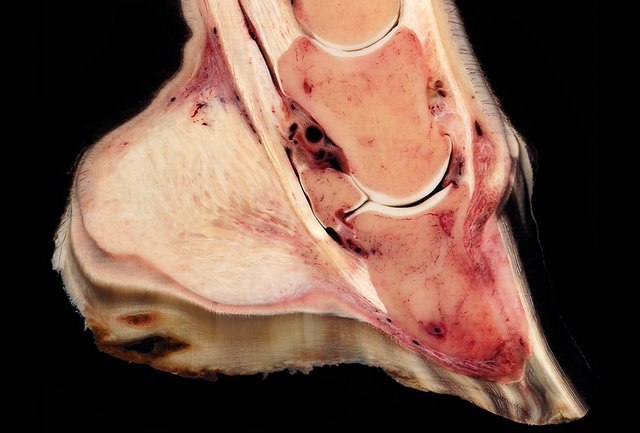Pituitary pars intermedia dysfunction
Pituitary pars intermedia dysfunction (PPID), or equine Cushing's disease, is an endocrine disease affecting the pituitary gland of horses. It is most commonly seen in older animals, and is classically associated with the formation of a long, wavy coat (hirsutism) and chronic laminitis.
Cushing's disease commonly causes hirsutism, muscle wasting along the top line, and abnormal fat distribution.
Laminitis is a disease that affects the feet of ungulates and is found mostly in horses and cattle. Clinical signs include foot tenderness progressing to inability to walk, increased digital pulses, and increased temperature in the hooves. Severe cases with outwardly visible clinical signs are known by the colloquial term founder, and progression of the disease will lead to perforation of the coffin bone through the sole of the hoof or being unable to stand up, requiring euthanasia.
Radiograph of a horse hoof showing rotation of the coffin bone and evidence of sinking, a condition often associated with laminitis. The annotation P2 stands for the middle phalanx, or pastern bone, and P3 denotes the distal phalanx, or coffin bone. The yellow lines mark the distance between the top and bottom part of the coffin bone relative to the hoof wall, showing the distal (bottom) of the coffin bone is rotated away from the hoof wall.
Hoof sagittal section with massive inflammation and rotation of third phalanx
Hoof specimen, sagittal section. Severe P3 rotation and penetration into the sole. A lamellar wedge is evident.
The front feet of this horse exhibit the rings and overgrowth typical of foundered horses.





